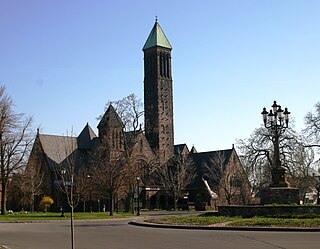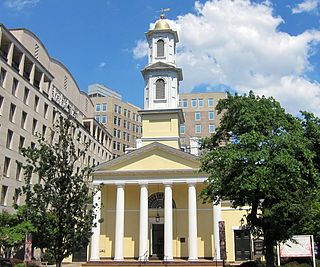
Religious affiliations can affect the electability of the presidents of the United States and shape their stances on policy matters and their visions of society and also how they want to lead it. While no president has ever openly identified as an atheist, Thomas Jefferson, Abraham Lincoln, and William Howard Taft, were speculated to be atheists by their opponents during political campaigns; in addition, a survey during the presidency of Donald Trump showed that 63% of Americans did not believe he was religious, despite his professed Christian affiliation. Conversely, other presidents, such as Jimmy Carter, have used their faith as a defining aspect of their campaigns and tenure in office.
The United Methodist Church (UMC) is a worldwide mainline Protestant denomination based in the United States, and a major part of Methodism. In the 19th century, its main predecessor, the Methodist Episcopal Church, was a leader in evangelicalism. The present denomination was founded in 1968 in Dallas, Texas, by union of the Methodist Church and the Evangelical United Brethren Church. The UMC traces its roots back to the revival movement of John and Charles Wesley in England, as well as the Great Awakening in the United States. As such, the church's theological orientation is decidedly Wesleyan. It embraces liturgical worship, holiness, and evangelical elements.

William McKinley was the 25th president of the United States, serving from 1897 until his assassination in 1901. A member of the Republican Party, he led a realignment that made Republicans largely dominant in the industrial states and nationwide for decades. He presided over victory in the Spanish–American War of 1898; gained control of Hawaii, Puerto Rico, the Philippines and Cuba; restored prosperity after a deep depression; rejected the inflationary monetary policy of free silver, keeping the nation on the gold standard; and raised protective tariffs.
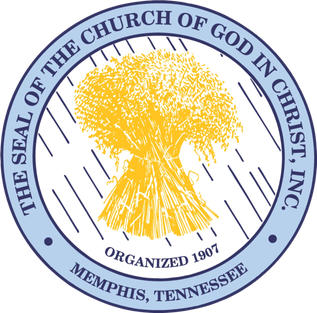
The Church of God in Christ (COGIC) is an international Holiness–Pentecostal Christian denomination, and the largest Pentecostal denomination in the United States. Although an international and multi-ethnic religious organization, it has a predominantly African American membership based within the United States. The international headquarters is in Memphis, Tennessee. The current Presiding Bishop is Bishop John Drew Sheard Sr., who is the Senior Pastor of the Greater Emmanuel Institutional Church of God in Christ of Detroit, Michigan. He was elected as the denomination's leader on March 27, 2021.

East Liberty Presbyterian Church, sometimes referred to as the Cathedral of Hope, is in the East Liberty neighborhood of the East End of Pittsburgh, Pennsylvania, United States. The current building is the fifth church building to occupy the site; the first was in 1819.
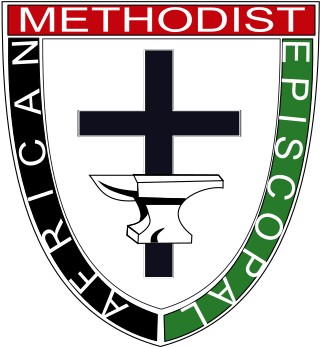
The African Methodist Episcopal Church, usually called the AME Church or AME, is a Methodist Black church. It adheres to Wesleyan-Arminian theology and has a connexional polity. The African Methodist Episcopal Church is the first independent Protestant denomination to be founded by black people; though it welcomes and has members of all ethnicities.
Pilgrim Holiness Church (PHC) or International Apostolic Holiness Church (IAHC) is a Christian denomination associated with the holiness movement that split from the Methodist Episcopal Church through the efforts of Martin Wells Knapp in 1897. It was first organized in Cincinnati, Ohio, as the International Holiness Union and Prayer League (IHU/IAHC). Knapp, founder of the IAHC, ordained and his Worldwide Missions Board sent Charles and Lettie Cowman who had attended God's Bible School to Japan in December 1900. By the International Apostolic Holiness Churches Foreign Missionary Board and the co-board of the Revivalist the Cowmans had been appointed the General Superintendents and the Kilbournes the vice-General Superintendent for Korea, Japan and China December 29, 1905. The organization later became the Pilgrim Holiness Church in 1922, the majority of which merged with the Wesleyan Methodists in 1968 to form the Wesleyan Church.

St. John's Episcopal Church, Lafayette Square is a historic Episcopal church located at Sixteenth Street and H Street NW, in Washington, D.C., along Black Lives Matter Plaza. The Greek Revival building, designed by Benjamin Henry Latrobe, is adjacent to Lafayette Square, one block from the White House. It is often called the "Church of the Presidents".

"Nearer, My God, to Thee" is a 19th-century Christian hymn by Sarah Flower Adams, which retells the story of Jacob's dream. Genesis 28:11–12 can be translated as follows: "So he came to a certain place and stayed there all night because the sun had set. And he took one of the stones of that place and put it at his head, and he lay down in that place to sleep. Then he dreamed, and behold, a ladder was set up on the earth, and its top reached to heaven; and there the angels of God were ascending and descending on it..."

A Christian burial is the burial of a deceased person with specifically Christian rites; typically, in consecrated ground. Until recent times Christians generally objected to cremation because it interfered with the concept of the resurrection of a corpse, and practiced inhumation almost exclusively. Today this opposition has all but vanished among Protestants and Catholics alike, and this is rapidly becoming more common, although Eastern Orthodox Churches still mostly forbid cremation.
Lloyd Christ Wicke (1901–1996) was an American bishop of The Methodist Church and the United Methodist Church, elected in 1948. When he died in 1996 he was the oldest of the 117 active and retired United Methodist Bishops at that time, as well as the last one elected during the decade of the 1940s.

William McKinley, the 25th president of the United States, was shot on the grounds of the Pan-American Exposition in the Temple of Music in Buffalo, New York, on September 6, 1901, six months into his second term. He was shaking hands with the public when anarchist Leon Czolgosz shot him twice in the abdomen. McKinley died on September 14 of gangrene caused by the wounds. He was the third American president to be assassinated, following Abraham Lincoln in 1865 and James A. Garfield in 1881.

Towson United Methodist Church is a large United Methodist Church in the historic Hampton subdivision of Towson, a suburb in Baltimore County, Maryland. Its past, rooted in 19th-century America and subsequent growth in the two centuries since then, has closely paralleled the nation's political and sociological trends. It was a congregation split asunder in 1861 on the eve of the American Civil War in a border state of divided loyalties, which eventually reunited and built a church in the post–World War II era of the 1950s, a time of reconciliation and rapid growth by mainline Protestant denominations, especially in the more affluent suburbs.
Since 1937, the United States presidential inauguration has included one or more prayers given by members of the clergy. Since 1933 an associated prayer service either public or private attended by the president-elect has often taken place on the morning of the day. At times a major public or broadcast prayer service takes place after the main ceremony most recently on the next day.

The Tremont Street Methodist Episcopal Church, located at 740 Tremont Street in Boston, Massachusetts, was built in 1862 from a design by architect Hammatt Billings. In the late 1960s it became the New Hope Baptist Church.
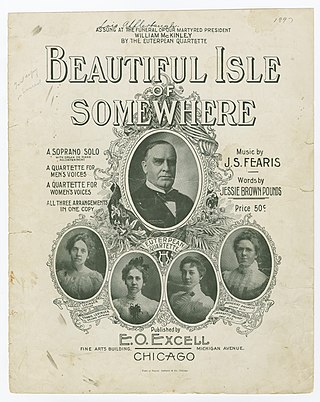
"Beautiful Isle of Somewhere" is a song with words by Jessie Brown Pounds and music by John Sylvester Fearis, written in 1897. The song gained huge popularity when it was used in William McKinley's funeral. It was subsequently a staple at funerals for decades, and there are dozens of recorded versions.

An outgrowth of local camp meetings, Rockville Stone Chapel was constructed in the fall of 1856, in use by Christmas of that year, and dedicated in February 1857. Divisions in the congregation over slavery soon split the congregation, with the Northern faction splitting off at Christmas Eve 1863 to form their own church. Attendance at the chapel slowly declined, with the last resident pastor leaving in 1895. Although services continued sporadically, the building fell into disrepair and, in 1929, the chapel was donated to the County of Solano. With the onset of the Great Depression that year, restoration did not occur for another decade, with the WPA finally accomplishing a full renovation in the spring of 1940. Declared a State Historical Landmark in October 1962, the chapel continues in use today (2019), serving as the sanctuary for the local Church of Christ congregation and also hosting weddings and funerals.
Protestant liturgy or Evangelical liturgy is a pattern for worship used by a Protestant congregation or denomination on a regular basis. The term liturgy comes from Greek and means "public work". Liturgy is especially important in the Historical Protestant churches, both mainline and evangelical, while Baptist, Pentecostal, and nondenominational churches tend to be very flexible and in some cases have no liturgy at all. It often but not exclusively occurs on Sunday.













